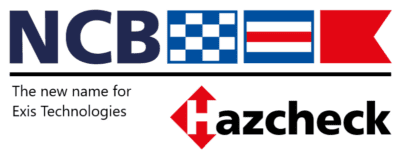Exis Technologies launches new internet portal for checking dangerous goods restrictions in container line shipping
Presented at the International Cargo Handling Co-ordination Association (ICHCA) Conference
29 February – 2 March 2016, Barcelona, Spain
Exis Technologies is pleased to announce the launch of Hazcheck Portal, a new internet portal to simplify the management of the various dangerous goods restrictions imposed on or by container lines involved in the shipment of dangerous goods by sea. Container ship operators charter space in their vessels to ‘partner’ lines to offer a wider delivery network and have ‘vessel sharing agreements’ (VSAs) or ‘slot charter agreements’ with upwards of five partner lines on some routes. The system is essential for economic slot utilization. The companies use a variety of ports and terminals to manage coverage for different customer requirements.
Hazcheck Portal enables participating lines to enter (or upload) and maintain the operator, vessel and port restrictions for their operations, check for DG compliance with partner lines and accept provisional bookings. The complete set of partner restrictions can be downloaded into each lines own in-house system. The Hazcheck Portal solution started as an initiative with several major container lines that already used Exis Technologies range of Hazcheck compliance systems for their DG shipping operations to assist with the issues that vessel sharing agreements pose.
For a ship line operator accepting a customer booking or a partner line booking on his ship, the process of checks is more or less the same. All the usual information is processed for each container or load. But it quickly gets more complicated when the containers are carrying dangerous goods (DG). Around 10 per cent of containers on deep sea container ships, upwards of a thousand containers on any of the larger container ships, contain DG. There are critical checks to be made against the particular voyage legs (voyage segments between ports/ terminals) for the DG being shipped.
Most lines restrict or prohibit certain classes of DG – particularly explosives, radioactive materials and some organic peroxides in reefer containers – so the booking line needs to know if the partner line that will carry the box or boxes will accept the DG.
Can the vessel booked for the voyage accommodate the DG Restrictions on the stowage of many DG consignments – on deck only, away from accommodation, or away from sources of heat – mean that suitable space is finite.
Which ports will the vessel call at? Many ports and individual container terminals have strict rules on the classes of DG that can be loaded, unloaded or transhipped; these restrictions often apply also to DG that stays on the vessel while it is in port. Lines cannot afford to have their schedules interrupted because the ‘wrong’ DG is aboard a ship.
Multiply this process by the thousands of partner line DG bookings made each day and by the number of ports/terminals in the network, under time pressure, and the scale and complexity of the problem becomes clear. Unlike the world of airline cargo shipments there is no single database of port and terminal restrictions or indeed operator restrictions. Each shipping line is trying to capture and keep its own record of port and terminal restrictions as they change on a frequent basis anywhere in their global network.
Hazcheck Portal is available as an extension of Hazcheck Gateway, the global DG web booking facility.
James Douglas, Director, Exis Technologies, commented: “Hazcheck Portal is currently supporting mainly the management of shipping line (operator) restrictions but the design allows the user to store and share data relating to location, port/terminal and vessels. Exis is working with the container shipping community to develop this part of the database with key industry partners and specifically ports and terminals, thereby, helping to improve safety in the shipment of DG by sea.”
Hazcheck Portal is being implemented globally to the shipping industry in stages. Several major lines were involved with the initial development and we are gradually opening up the portal to more lines with a view to offering it to a wide range of companies (not just container lines) during 2016.”







